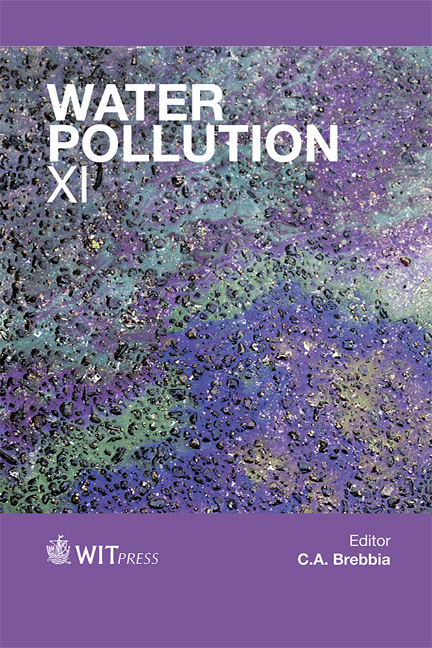Mass Balance Of Emerging Organic Micropollutants In A Small Wastewater Treatment Plant
Price
Free (open access)
Transaction
Volume
164
Pages
12
Page Range
345 - 356
Published
2012
Size
497 kb
Paper DOI
10.2495/WP120301
Copyright
WIT Press
Author(s)
M. R. Boni, S. Sbaffoni, P. Tedesco & M. Vaccari
Abstract
Emerging organic micropollutants are compounds measured in water in μg/l or ng/l which may have long-term negative effects on both wildlife and humans. The purpose of this work was to perform a mass balance of emerging organic micropollutants on activated sludge tank and on secondary settling tank in a small wastewater treatment plant in the Municipality of Rome. The analytes monitored in this work were: Estrone (E1), 17β-Estradiol (E2) and 17α- Ethinylestradiol (EE2) for steroid hormones, 4-Nonylphenol (4-NP) and Bisphenol A (BPA) for substituted Phenols and Alkylphenols, Amphetamine (AM), Methamphetamine (MET), Benzoylecgonine (BEG) and 11-nor-Δ9-THC- 9carboxy (THC-COOH) for drugs of abuse. Mass balance on activated sludge tank showed that the emerging organic micropollutants removed were BPA (59%), EE2 (34%), AM (56%) and THCCOOH (35%). The processes occurring in the secondary settling tank were able to reduce 4-NP (26%), BPA (74%), E1 (82%), EE2 (93%), AM (44%), MET (80%), BEG (72%) and THC-COOH (39%). The residual amount of each substance was distributed between the effluent, the return sludge line and the excess sludge. Since the removal of emerging organic micropollutants was partial, the conventional wastewater treatment plant is not able to completely break down these substances. Accordingly, these compounds are found in water body potentially active and dangerous to wildlife and humans. Keywords: alkylphenolos, drugs of abuse, endocrine disruptors, micropollutants, steroid hormones, wastewater treatment plant.
Keywords
alkylphenolos, drugs of abuse, endocrine disruptors, micropollutants, steroid hormones, wastewater treatment plant





